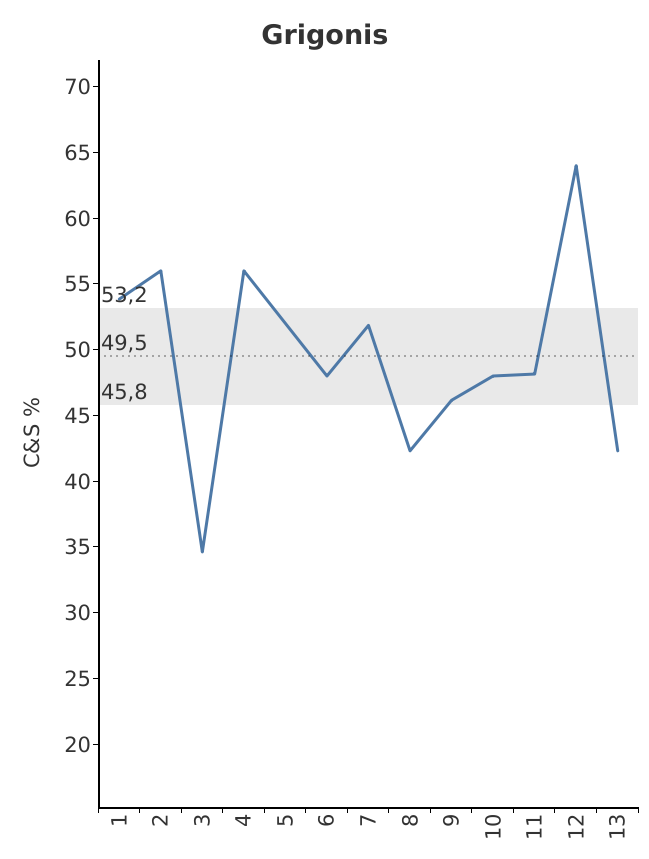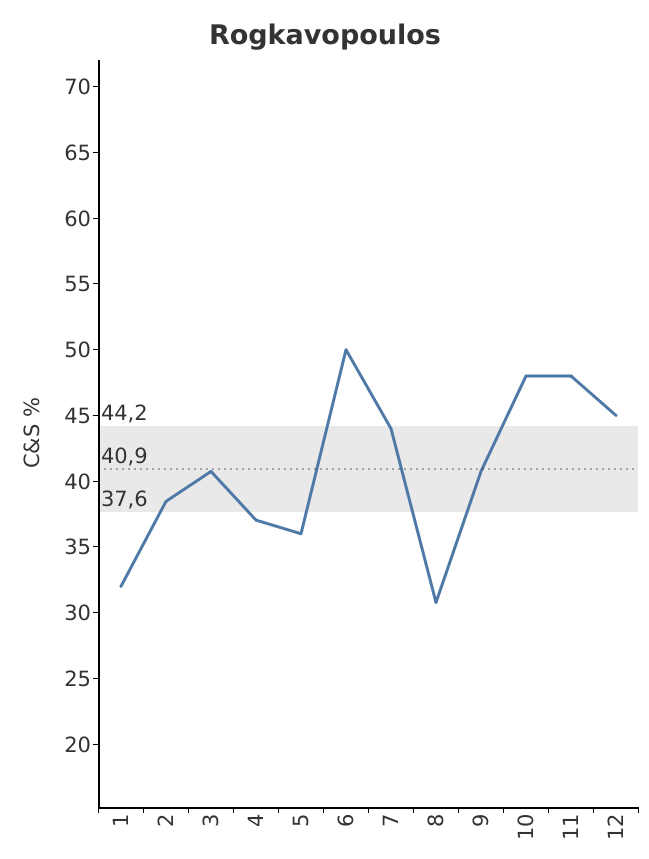In our previous article, we explored how many games it takes for team efficiency metrics to stabilize. We concluded that, after five games, certain parameters start showing a reliable level of stability (with fluctuations under 5%), and after 11 games, three-point percentage (3P%) becomes a more stable metric. But what happens when we zoom in on individual player performance?
When analyzing players, data volume significantly decreases, which is why, at Basketball Analytics Lab, we approach player performance differently. In this piece, we aim to demonstrate a method for evaluating player shooting—a tool that could be invaluable for head coaches, assistants, analysts, or player development coaches. This is just one approach among many, but it’s a valuable framework for understanding player tendencies over time.
The Shooting Analysis Method
Our shooting analysis starts with defining the type of shot we want to assess. For this example, we’ll focus on catch-and-shoot (C&S) situations, analyzing five Euroleague players who heavily rely on this shot type:
Mario Grigonis
Alec Peters
Nikos Rogkavopoulos
Mario Hezonja
Nigel Hayes-Davis
We collected C&S data from the last three seasons (from season 2021-22 to 2023-2024), with all data sourced from Hudl InStat data platform.
One of the first questions we tackle is whether it’s meaningful to assess shooting percentages on a game-by-game basis. In our view, it’s not. The sample size for C&S attempts in a single game is often too small—just one additional made or missed shot can dramatically skew the percentage.
Instead, we recommend analyzing shooting in blocks of games. For this article, we’ve chosen blocks of games in which players attempted 25 or more C&S. These blocks allow us to accumulate meaningful data, providing a more stable foundation for analysis. Once the blocks are defined (in chronological order, from oldest to most recent), we can analyze the shooting percentages for each block. Alongside these percentages, we’ve included the player's overall average and a 90% confidence interval, which gives us a clearer picture of performance trends.
Player Analysis
Mario Grigonis
Grigonis was one of the Euroleague’s most prolific C&S shooters last season. While there are outliers—like Blocks 3 and 12, where his shooting percentage fluctuates outside the norm—his percentages generally stay within or near his confidence interval. This suggests Grigonis is a consistent C&S shooter, a conclusion further supported by the narrow width of his confidence interval, indicating stability.
Alec Peters
Peters is another high-volume C&S shooter with respectable percentages. His performance does exhibit peaks and valleys, but none are too drastic. The only consecutive blocks where Peters dips below his confidence interval are Blocks 5 and 6. On the positive side, blocks 12 through 15 show a strong stretch of above-average shooting. It would be worth exploring this period further to see if there are any replicable factors contributing to his success during this stretch.
Nikos Rogkavopoulos
Rogkavopoulos’ blocks 9 through 12 represent his final season with Baskonia, beginning in early September. Despite being just 22 years old and new to the Euroleague, Rogkavopoulos managed to outperform his average across all four blocks of that season. For such a young player, this consistency in C&S situations signals potential as a future Euroleague mainstay.
Mario Hezonja
Hezonja, the top C&S shooter in terms of volume for the 2023-24 EuroLeague season, shows an intriguing pattern. Across the last three seasons, he consistently alternates between stretches of high performance (2-3 blocks above his average) followed by a down block. This cycle repeats four times in our dataset. After approximately three months of strong play, Hezonja tends to hit a period of lower shooting efficiency, often lasting about a month. Notably, his two most recent down blocks (blocks 23 and 24) coincided with the Euroleague and ACB playoffs. A deeper dive into these crucial stretches could reveal why his performance dipped when it mattered most—perhaps even costing Real Madrid a Euroleague title.
Nigel Hayes-Davis
Lastly, we examined Nigel Hayes-Davis, another high-volume C&S shooter with a notably wide confidence interval. Hayes-Davis’ shooting percentage fluctuates significantly, contributing to this wide interval. However, his last five blocks all feature shooting percentages over 40%, indicating he found some stability during the 2023-24 season. Still, the dramatic dips in blocks 4, 7, and 12 raise red flags. Identifying the reasons for these steep drops—whether it's shot selection, defensive pressure, or other factors—could help him maintain consistency moving forward.
Key Takeaways and Future Considerations
In this analysis, we chose to divide blocks based on 25 C&S attempts, but this criterion is flexible. End-of-season breaks or changes in team circumstances could justify closing out a block, even if fewer attempts have been logged. In some cases, merging a smaller block with the previous one may be necessary.
Analyzing multiple seasons can also introduce challenges, as a player’s competition level may evolve from year to year, potentially skewing the data. One way to mitigate this is by incorporating competitive 5-on-5 training situations into the dataset, increasing the volume of data and adding context to the analysis.
The primary goal of this analysis is to identify anomalous shooting streaks, whether positive or negative. The real work, however, comes after spotting these trends—understanding the why behind a shooting slump is key. A dip in percentage doesn’t necessarily mean a player is struggling with their shot. It could be a result of late-clock situations, tightly contested attempts, or difficult opponents. Alternatively, external factors such as fatigue, or off-court issues could also be at play.
Ultimately, this method provides a framework for detecting player trends over time, and it could easily be adapted to evaluate other areas of play, such as post-up situations or pick-and-roll efficiency.
At Basketball Analytics Lab, we offer data analytics services to clubs, enabling them to enhance their performance without significantly increasing their budgets.
Feel free to share and comment if you found this article interesting.
Where Data Meets the Hoops - Let's Analyse the Game Together!







